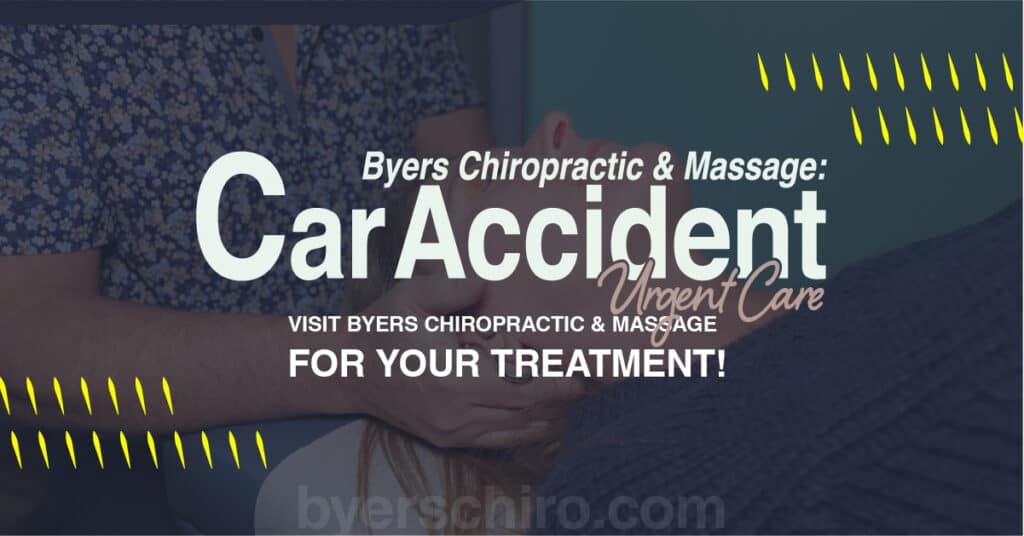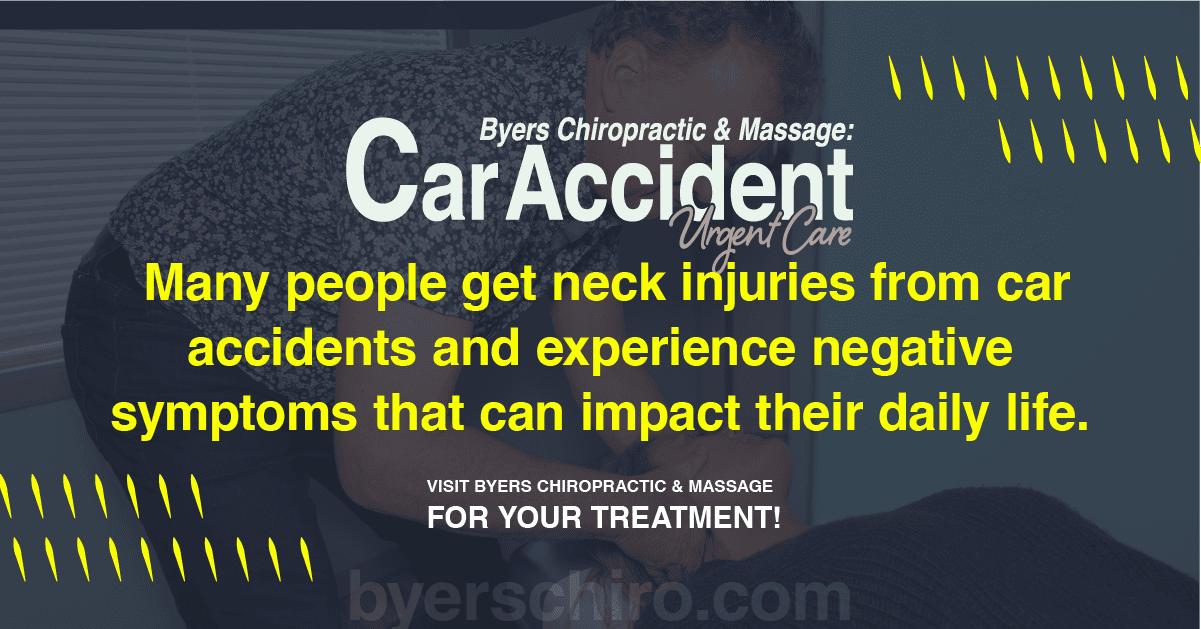The neck is the cervical spine, located at the base of your skull and bearing the weight of your head. Necks are flexible so that the head can move around, but this also means that the neck can be easily injured. Many people get neck injuries from car accidents and experience negative symptoms that can impact their daily life.
Although there are a lot of causes for neck pain, one of the most common ones is accidents or injuries. When the neck and head are suddenly forced in a direction before whipping back in the other direction, it’s called whiplash. Whiplash can cause injury to the neck’s ligaments, muscles, and other soft tissues. When muscles are injured, they can be painful and stiff. When whiplash is severe, it can cause intervertebral joints, nerve roots, discs, and more to be injured. Most whiplash cases are from car accidents. About 15 percent of Americans suffer from neck pain, according to the U.S. National Institute of Health Statistics.
Symptoms from whiplash may arise a couple days later, or a longer amount of time. Symptoms may just cause some discomfort, or can be seriously painful, making it difficult to carry out daily tasks. Some of the most common whiplash symptoms include: dizziness, fatigue, numbness in the extremities, neck stiffness, pain in the neck that worsens with movements, loss of neck range of motion, chronic headaches/migraines, and radiating pain or tenderness. Some symptoms of more severe whiplash are sleeping and concentrating issues, memory problems, irritability, depression, blurred vision, and more.
Chiropractors are adept at treating neck pain, treating the root cause of the problem instead of just masking the symptoms. Many people come to us for whiplash treatment. When you come into a chiropractic clinic, you will receive a health examination to determine what is causing your pain. They will ask you about your symptoms and health history. This will help them create a treatment plan tailored to your needs. This plan will probably consist of some combination of chiropractic adjustments, massage, exercises, and lifestyle changes.
One of the main treatment methods for neck pain that chiropractors use is adjustments. This is where precise pressure is applied to the neck with gentle pushes by hand or with a device. The goal of this is to help the neck’s vertebrae go back into their correct position, improving flexibility and range-of-motion, as well as reducing pain, stiffness, and soreness. Adjustments will be done over the course of multiple visits, and done in conjunction with other treatment methods to ensure the best results. Many patients experience symptom relief when they get whiplash treatment from Byers Chiropractic and Massage: Car Accident Urgent Care.

Another treatment method is spinal decompression, which is where the chiropractor gently stresses the spine to help discs go back into their correct position, as well as relieve neck pain. When somebody is in a car accident, it can jolt the cervical spine out of its regular position, leading to pain, stiffness, and other issues. Spinal decompression’s flexion-distraction force aims to treat this pain, as well as strengthen the muscles in your neck and help it stabilize.
Another treatment for neck pain from car accidents that we offer at Byers Chiropractic and Massage: Car Accident Urgent Care is massage therapy. Massage can help your whole body’s health, as well as reduce neck pain and swelling. Massages for neck pain usually focus on the shoulders and upper back. It might be painful to be touched in the injured area at first, but gentle massage can help relax your muscles. It can also promote blood flow to the area, warming it up and encouraging healing. Getting massages regularly has benefits such as keeping your joints flexible, which can prevent future injuries such as pulling a muscle. It also can improve your posture and range of motion. Massage can also break up scar tissue so that it doesn’t form and cause stiffness in your neck after you were injured in an accident.
Massage therapy is especially helpful when it is done in combination with other treatment methods such as chiropractic adjustments and/or spinal decompression. The adjustments can put the spine back into its proper alignment, and then massage can help keep it in that position instead of the muscles and tendons pulling it back out of place. Exercises can also help strengthen the neck muscles and keep the vertebrae in position.
Trigger point massage is a technique used by some massage therapists. The aim of it is to help relax tension and reduce pain in the neck. It works by targeting specific areas of the neck, “trigger points.” Your treatment plan might also include deep tissue massage. As the name implies, deep tissue works to relax the deep tissues of your body instead of targeting surface-level tissues. Many people experience pain relief from this type of massage. It can be used to treat neck pain from car accidents.
Massage is also helpful in relieving stress. After being in a car accident, there aren’t just physical symptoms. Many people have to deal with the mental impact of the crash. There’s medical bills to deal with, car repairs, insurance claims, and more that can cause extra stress. The crash itself may have caused psychological trauma as well. Stress can cause tension, especially in the neck. Massage therapy is able to relieve this tension, lowering stress levels, promoting relaxation, and relieving pain.
It’s a smart idea to visit a chiropractor after being involved in a car accident. At Byers Chiropractic and Massage: Car Accident Urgent Care, we specialize in treating car accident injuries. We have the experience and training needed to treat whiplash after someone was in a car accident. You should not have to just live with your neck pain. If you are dealing with neck pain after a car accident, call our clinic today to set up an appointment. The longer that you wait, the more risk that your symptoms could worsen or become chronic. For the best car accident chiropractor in Kent, you can rely on Byers Chiropractic and Massage: Car Accident Urgent Care.


